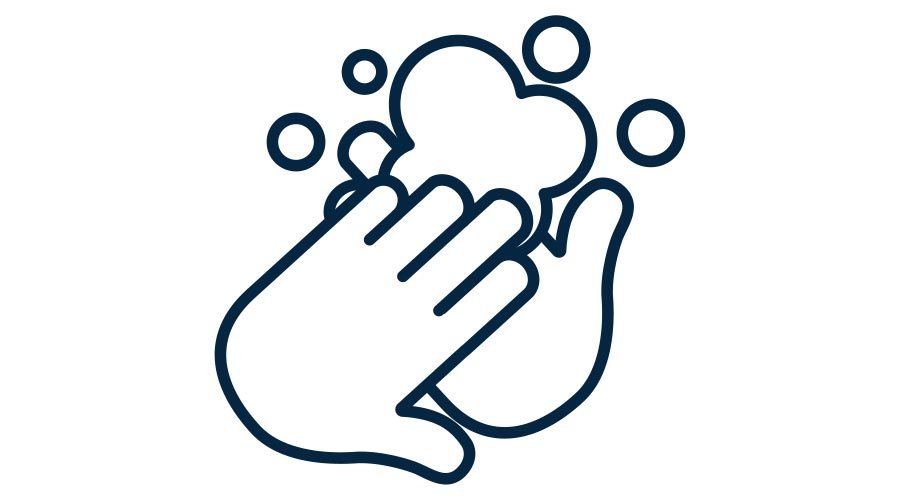
According to the Healthy Handwashing Survey conducted by Bradley Company, Americans implement handwashing on an “as needed basis.” Case in point, 74 percent wash their hands more frequently or more thoroughly in response to seasonal virus outbreaks and 54 percent increase their handwashing activity when they’re sick.
In addition, 77 percent make it a point to wash up when on a road trip or in an airport and 67 percent wash more when they have travel coming up.
Public restroom usage is another handwashing occasion. Respondents said they suds up 89 percent of the time after using a public facility. The majority of those who skipped the cleansing step cited a lack of soap or paper towels while others claimed nonworking sinks hampered their efforts. Interestingly, 29 percent of men said they didn’t feel the need to wash their hands after using a public restroom.
“Regular handwashing throughout the day helps remove germs and viruses that can cause sickness,” says medical microbiologist Michael P. McCann, Ph.D., professor and chair of biology, Saint Joseph's University. “Hand hygiene is a simple and easy thing to do and shouldn’t be overlooked.”
15 Years of Handwashing Insights
Bradley, a company that manufactures washroom accessories and partitions, executed its first Healthy Handwashing Survey in 2009 as the H1N1 virus (also known as the swine flu) was hitting the country. Back then, just 45 percent of Americans said they elevated their hand hygiene in response to seasonal virus outbreaks.
Throughout the years, Bradley has continued to query more than 1,000 adults about their handwashing habits, concerns about seasonal viruses and the state of public restrooms.
As expected, handwashing diligence hit all-time highs in 2020 and 2021 as COVID-19 was spreading. Since then, the frequency has gone back to pre-pandemic times. Specifically, in the spring of 2020, Americans were washing their hands an average of 10.5 times per day compared to an average of six times a day prior to Covid.
“No matter the season and no matter what’s circulating, handwashing should be top-of-mind every single day,” says Jon Dommisse, vice president of marketing and corporate communication for Bradley. “It’s especially important for parents to get their children into the life-long habit of washing their hands before and after eating, after using the bathroom, after sneezing and other times throughout the day.”
According to the survey results, most parents do take action to encourage their children to wash up. 63 percent ask them to wash their hands, 39 percent buy fun soaps and 30 percent incorporate it into their routine.
However, parents are realistic about their offspring’s handwashing follow through.
Only one in four believe their children always wash their hands when they tell them to. Many parents assume their kids are taking a short cut because that’s what they did. 63 percent of adults admit when they were young they simply ran the water instead of washing up.
Public Restrooms Examined
In addition to handwashing habits, the annual survey delved into the state of public restrooms.
The findings found it’s a mixed bag. While a good chunk of Americans (43 percent) believe the condition of public restrooms has improved over the past 15 years, 35 percent say they haven’t noticed any change one way or another.
On the bad news front, a majority (68 percent) report they’ve had a particularly unpleasant experience in a public restroom due to the facilities. The top complaints are clogged or unflushed toilets, an old, dirty or unkempt appearance and unpleasant smells.
To combat those negative issues, Americans would like restrooms to be cleaner and more well-stocked, have touchless fixtures throughout and offer a good supply of paper towels, even if there are hand dryers.
The annual Healthy Handwashing Survey from Bradley queried 1,003 American adults Jan. 4-9, 2024, about their handwashing habits, concerns about seasonal viruses and their use of public restrooms. Participants were from around the country and were fairly evenly split between women (51 percent) and men (48 percent). 1 percent of survey respondents selected other.

 The Down and Dirty on Cleaning in Virus Season
The Down and Dirty on Cleaning in Virus Season How Surfactant Use is Expanding in Commercial Cleaning
How Surfactant Use is Expanding in Commercial Cleaning